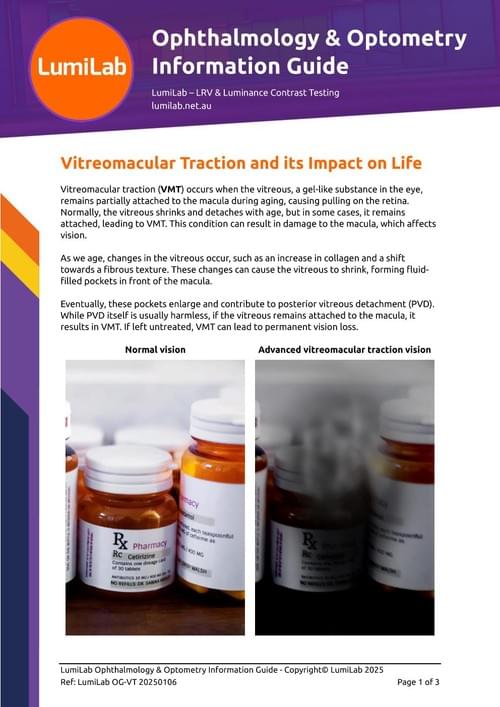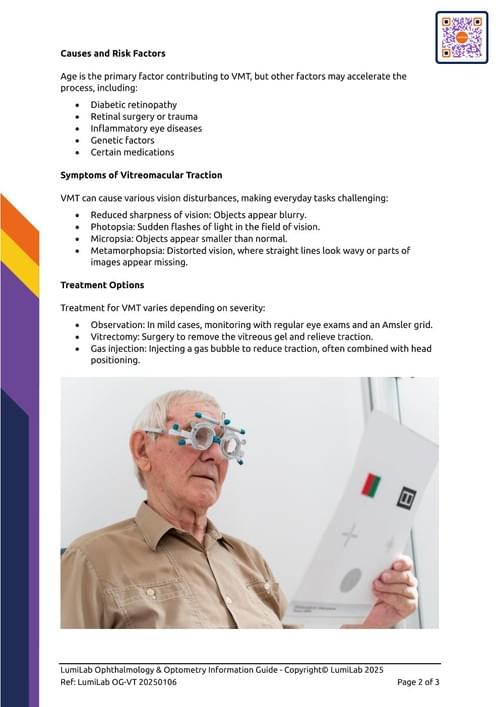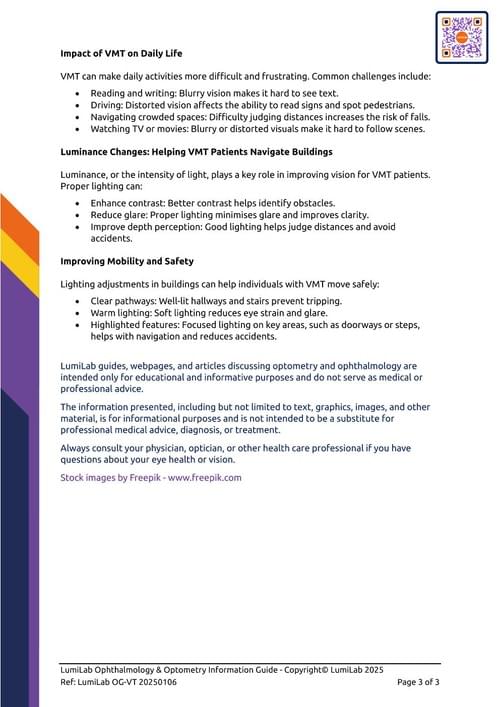Go Back

Vitreomacular Traction and its Impact on Life: Ophthalmology & Optometry Information Guide
A$0.00
Vitreomacular traction (VMT) occurs when the vitreous, a gel-like substance in the eye, remains partially attached to the macula during aging, causing pulling on the retina. Normally, the vitreous shrinks and detaches with age, but in some cases, it remains attached, leading to VMT. This condition can result in damage to the macula, which affects vision. As we age, changes in the vitreous occur, such as an increase in collagen and a shift towards a fibrous texture. These changes can cause the vitreous to shrink, forming fluid-filled pockets in front of the macula. Eventually, these pockets enlarge and contribute to posterior vitreous detachment (PVD). While PVD itself is usually harmless, if the vitreous remains attached to the macula, it results in VMT. If left untreated, VMT can lead to permanent vision loss.
This fact sheet is part of our Ophthalmology and Optometry Information Guide series, developed to help people understand eye conditions and their impact on navigating the built environment.
This fact sheet is part of our Ophthalmology and Optometry Information Guide series, developed to help people understand eye conditions and their impact on navigating the built environment.
Quantity
Add to cart




